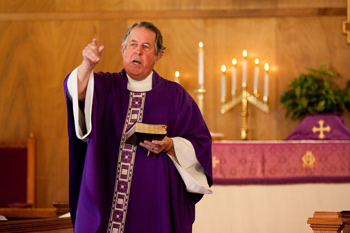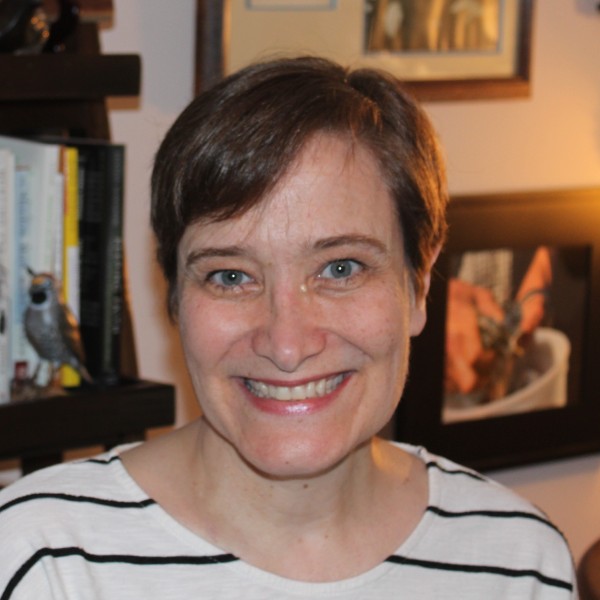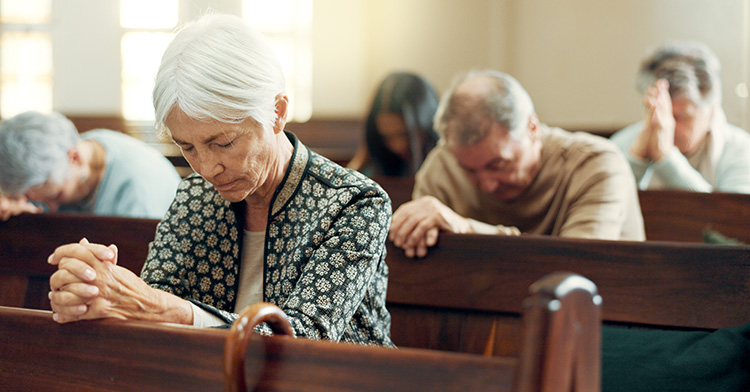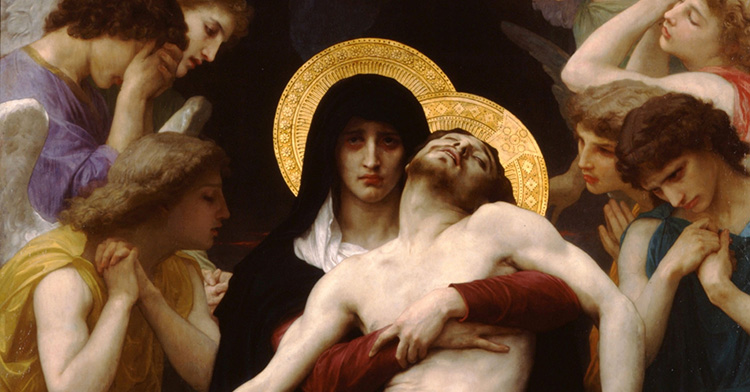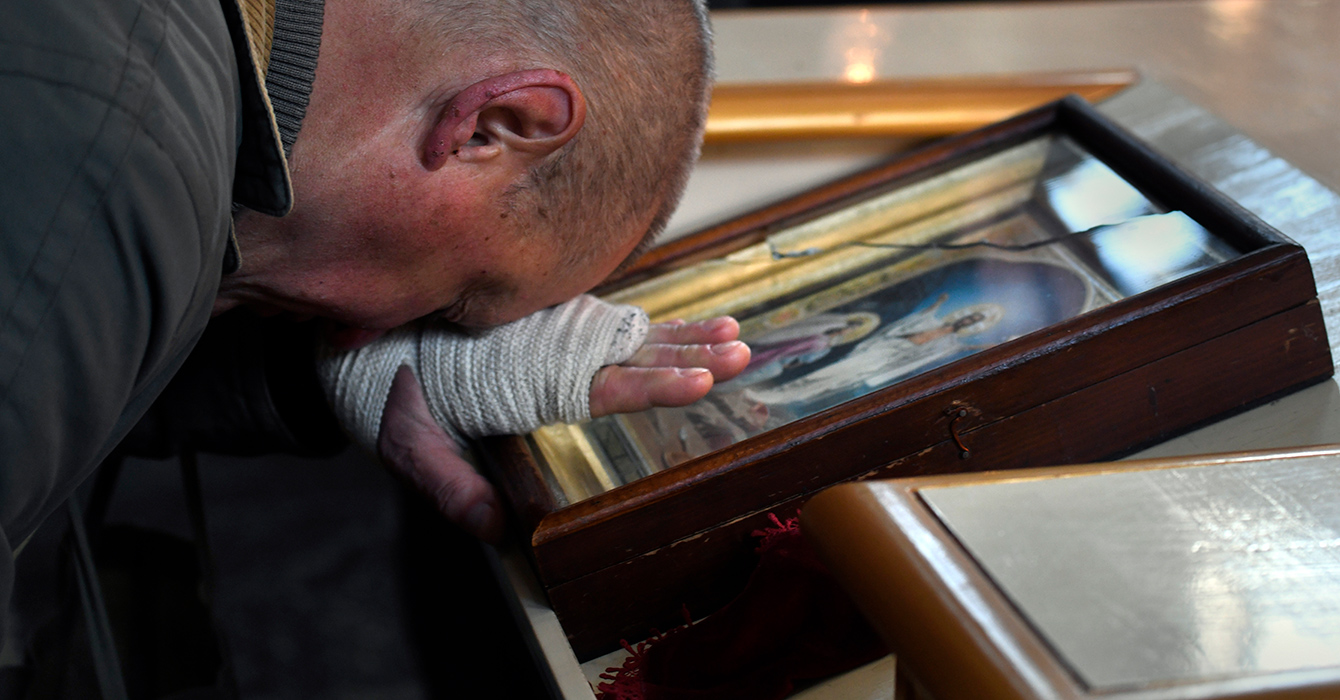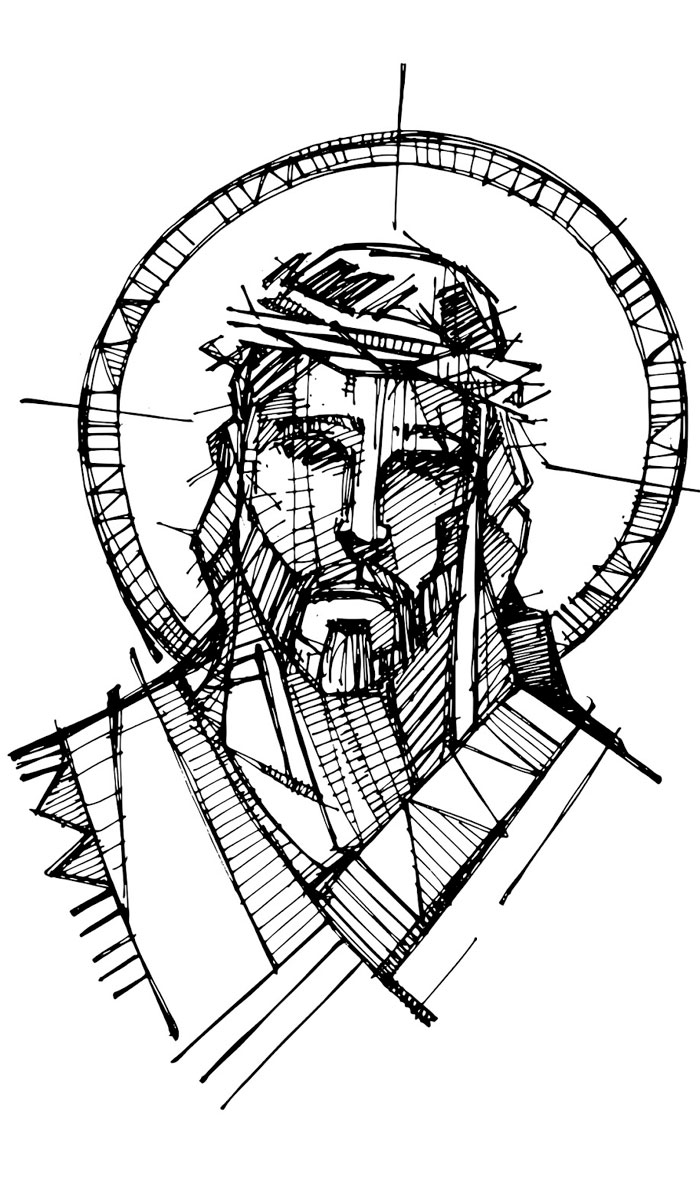Over time, any story, even the Easter story, can be worn smooth. Told and retold, over 2,000 years or just a lifetime, a story becomes familiar, the rough edges leveled, blurred.
It’s not that the retelling renders a story powerless. But it does make a story hard to hear the way you heard it the first time. Like it happened the first time.
What gets lost in the retelling, even with the Paschal mystery, is surprise. Shock. The jaw-dropping, slap-me-in-the-face astonishment and wonder of the unexpected.
But this Easter, one small church in North Carolina will hear the story afresh, with ears attuned to surprise.
A historically African-American congregation, St. Cyprian’s Episcopal Church barely had a pulse two years ago, when maybe 15 people showed up on a good Sunday. Even worse, after sharing a priest for 40 years with the white Episcopal parish across town, St. Cyprian’s was suddenly on its own. Some in the tiny church believed it would die.
Today, propelled by one unexpected event after another, St. Cyprian's is growing.
Lay leaders have stepped forward with new ideas for ministry and outreach. Out of nowhere, a white Lutheran pastor, bored in retirement after 45 years pastoring African-American congregations, came knocking on the diocese’s door, looking for part-time work. At 75, he is experiencing some of the most exciting, fulfilling ministry of his career. New members, black and white, are joining the church, 20 in January alone.
One of the bigger surprises: all of this is happening in Oxford, N.C., a small town with a troubled racial past, the town where the events recounted in the book “Blood Done Sign My Name” occurred.
“This is a church that was stuck, suffering and near death,” said the Rev. John Heinemeier, the Lutheran pastor who now serves as vicar at St. Cyprian’s. “But a big part of Easter, then and at St. Cyprian’s, is surprise. The resurrection came as a flat-out surprise to the disciples and everyone else around Jesus. They just didn’t think that was going to happen. That was not one of the options.”
Reaching across the racial divide in a time of turmoil
Two years ago, resurrection wasn’t high on St. Cyprian’s list of options, either. Founded in 1906, the church, like most rural Episcopal churches, had always been small. But it had once been an active presence in Oxford’s black community, the scene of weekend dances and youth programs in the 1960s and 1970s.
For most of its existence, the church had had its own full-time priest and been served by black Episcopal clergy. The last one, the Rev. Othello D. Stanley, was vicar from 1943 to 1970.
As Stanley was stepping down, however, Oxford was engulfed in racial turmoil following the shooting death of Henry “Dickie” Marrow, a 23-year-old black veteran, and the acquittal of the white men charged in his killing. The events of that period -- an angry summer of protest marches, Klan rallies, firebombings and an economic boycott of the town’s merchants -- were chronicled by historian Timothy B. Tyson in his book “Blood Done Sign My Name.”
In a statement of racial solidarity, St. Cyprian’s and St. Stephen’s asked to be “yoked” together by the Episcopal Diocese of North Carolina, with the two churches sharing a priest. In 1970, the Rev. Harrison Simons was appointed rector at St. Stephen’s -- a full parish church -- and vicar at St. Cyprian’s, a mission church supported by the diocese. He served in those posts until his retirement in 1997.
“The yoke was an attempt by the two churches and the diocese to be a witness that the Episcopal Church stood together in a divided community,” said the Rev. Canon Michael B. Hunn, who serves as an assistant to the current bishop, the Rt. Rev. Michael B. Curry, coordinating programs and pastoral ministry for the diocese.
“In and around Oxford, the yoke symbolized a deliberate reaching across the racial divide and working together toward common ministry,” he said.
By all accounts, the arrangement worked well under Simons. He spent Sunday mornings traveling between the two churches, leading worship at St. Stephen’s at 8 a.m. and St. Cyprian’s at 9 a.m., and again at St. Stephen’s at 11 a.m. Most of Simons’ time was spent at the larger, parish church, but the two congregations conducted joint outreach and mission programs and worshipped together several times a year.
Vickie Hammie, a lifelong member of St. Cyprian’s and today the church’s senior warden, or vestry chair, was a teenager when Marrow was killed, and she participated in a march to the state capitol in Raleigh. She remembers the excitement she and others felt about the arrangement between the two churches.
“Harrison came during a very heated and tense time,” Hammie said. “When he came, we were like, ‘Yeah, now we can show the world who we are, black and white together and all that.’ He stood for equality and the churches coming together.”
A new vision for two churches
After Simons retired, the situation was never quite the same, Hammie and others said. Sherry Owens, the treasurer and parish administrator at St. Stephen’s, said later priests had difficulty making the arrangement work.
“When Harrison was here, he saw it as a way to do healing, so he owned this relationship in many ways,” she said. “When people came behind him, it wore them out.”
When the priest position opened in 2008, St. Stephen’s began discussions with the diocese and St. Cyprian’s, pushing to de-yoke the two congregations.
St. Stephen’s was merely holding its own, Owens said. As part of a visioning process, the vestry surveyed the church and found that members wanted a full-time clergyperson again. They wanted a priest at St. Stephen’s all Sunday morning, both to lead the two services and to teach adult education, something that had not happened in almost 40 years.
By that time, St. Cyprian’s was struggling, with only about 15 people attending Sunday worship, virtually no young people, and no programs. Except for Sunday worship, the church was mostly closed.
The push to de-yoke the two churches caused hurt feelings among many at St. Cyprian’s.
“I didn’t see it coming,” said Hammie, who had just been elected warden in December 2008 when St. Stephen’s vestry members informed her they were ending the relationship. “I walked right into a hornet’s nest and didn’t have a clue. We had to become self-sufficient overnight.”
The yoke, however, could not be dissolved by either church, but only by the bishop. And Curry, Hunn said, was adamant that the yoke would be dissolved only if it could be done in a way that was life-giving for both congregations and left neither feeling abandoned.
As discussions continued, it became apparent to all that the yoke had outlived its purpose, Hunn said. The relationship -- created to transcend racial barriers -- no longer meant what it did in 1970. If anything, the yoke had been caught up in old patterns of paternalism and dependency that were preventing both churches from reaching their potential, he said.
“There was a growing sense that the yoke, which provided shelter at a time of great violence and riots, was not as life-giving 38 years later,” Hunn said.
As Hunn continued working with the two churches, St. Cyprian’s began to envision a future on its own. Members began to believe that maybe they could have their own priest again. They began plans to remodel the church fellowship hall, got grants to tutor foster children and fight child abuse, and elected new vestry members to help Hammie, including a new junior warden, Harry Mills.
An Oxford native who left town after graduating from high school in 1978, Mills had moved home three years earlier from Houston. There, he had been active in the Episcopal Church and worked for the Episcopal diocese as program coordinator for Lord of the Streets Episcopal Church, a homeless ministry in Houston.
“We had no choice but to sink or swim,” Mills said. “We decided we weren’t going to drown; we were going to swim. And God put everything in place.”
Ready to make it happen
Perhaps the most unexpected surprise, what Hunn calls “the craziest Holy Spirit moment,” occurred when he got a telephone call from Heinemeier.
A white Southerner raised in San Angelo, Texas, Heinemeier had spent his career pastoring black Lutheran congregations in Brooklyn and the Bronx, Roxbury in Boston and the east side of Baltimore. In 2008 he retired and, with his wife, Sharon, moved to Durham to be near their daughter, a graduate student at the University of North Carolina at Chapel Hill.
Heinemeier loved being a pastor, but he had looked forward to retirement. He had dreamed about having time to do all the reading he’d long put off, visit a variety of churches and just do whatever he wanted. But within months, he was bored. “I walked a lot,” he said. “It didn’t take me too long to discover that the juice was still there.”
Heinemeier first checked with the North Carolina Synod of the Evangelical Lutheran Church in America to see if they had any part-time pastor positions. When they didn’t, he checked with the Episcopalians, with whom the Lutherans are in communion.
“I get a call from this man, and he says, ‘Do you have any work for a guy like me?’” Hunn said. “I told him, ‘I have just the place for you.’”
When Hammie and the vestry met Heinemeier, they were overwhelmed by his enthusiasm and vision but Hammie wondered, “What’s the catch?” Why would someone as experienced as Heinemeier want to be vicar at St. Cyprian’s?
“Last time I looked, nobody was trying to break down St. Cyprian’s door to be the vicar,” she said. “But he was passionate about it, and wanted to come here. I wasn’t accustomed to anybody wanting to come and do anything for St. Cyprian’s. We had nothing.”
As far as having another in a string of white priests, Hammie said she and other vestry members didn’t care: “As long as you know the Lord and can bring it, I don’t care what race you are.”
Once Hammie got over her shock and skepticism, “It was on,” she said. “And it’s been on ever since.”
Since Heinemeier became vicar in August 2009, St. Cyprian’s members have launched one new ministry after another.
They have Sunday school again, with classes for children, youth and adults. They started an African drumming group, the St. Cyprian’s Drummers, which draws 15 to 20 participants, black and white teenagers, from throughout Oxford. They obtained a grant to bring visiting artists and writers to the town’s middle school. They started a book club and a drama group. Once a month, they invite a community leader to join them for worship, sharing with the church his or her dreams for Oxford. They have a small choir again, and an organist who came over from another church in town. Members are serving on diocesan committees.
While Hammie and others credit Heinemeier for much of the church’s progress, he is quick to discount his role. It has been a true partnership, he said. The first time he met the vestry, he sensed that they were ready to dream.
“They had been through difficult times but wanted their own priest and wanted to come in from the margins,” he said. “They wanted to become part of the warp and woof of Oxford. They were chomping at the bit, ready for a new day. They were ready to make it happen, and they did.”
‘I like to see God’s folk’
But if the past two years have been a resurrection story for St. Cyprian’s, they’ve been no less so for Heinemeier. From the day he started, “it has been unabated excitement, without missing a beat.”
Heinemeier easily looks 10 years younger than his 75 years, but on Sunday mornings, another five or 10 melt away. Leading worship, dressed in chasuble and stole, he beams, cheeks glowing, a pastor clearly in love with his church and his ministry.
Ministry at St. Cyprian’s isn’t a “caretaker” slot but real pastoral ministry, about new life and expansion, he said: “This is still imagination time. It’s a surprise to me that I can still be serving the church.”
As word has spread about St. Cyprian’s, attendance has grown to about 40 or more on most Sundays. The church now has about 10 to 15 white members and in February elected its first white vestry member.
Hammie welcomes the diversity. St. Cyprian’s, she said, will always be an African-American church with an African-American identity that is not diminished by the inclusion of people of other races.
“It doesn’t have to be all African-American to me,” she said. “My thing is, I like flavor. I like to see different people. I like to see God’s folk, and I can’t see God’s folk in just my folk all the time. I need to see God in everybody.
“So whether it’s white, black, Mexican, Latin or Asian, bring it honey. Bring it on. We won’t ever lose our heritage. We are who we are. We are St. Cyprian’s.”
Both churches, St. Cyprian’s and St. Stephen’s, are thriving now, Hunn said. Removing the yoke allowed each congregation to imagine new possibilities.
And as you would expect of an Easter people, to nobody’s surprise the two congregations are slowly rebuilding their relationship. The two churches are talking about doing joint missions and outreach together. They and the town’s two United Methodist congregations held a joint Ash Wednesday service. Their youth groups are doing projects together.
“They’re still our brothers and sisters in Christ,” Hammie said. “As far as I’m concerned, they did us a favor,” she said. “We became liberated. We became able to show who we were. We’ve taken leaps and bounds. We have soared.
“We have been resurrected.”
Questions to consider
Questions to consider:
- This season in St. Cyprian’s life is one of resurrection-like surprises. What surprises have you witnessed or are you witnessing in your life and work?
- Part of what prompted St. Cyprian’s to thrive was the end of its yoked relationship with another parish. What patterns of behavior or established relationships do you experience that have outlived their usefulness in your work? What freedom might you find if they were to end?
- The story suggests the importance of a vital shared ministry between clergy and laity. Where do you experience this? What would it mean for you to encourage this further?
- Do you know retired persons who have gifts that could or should be used? What can you do to support them in finding ways to serve?



